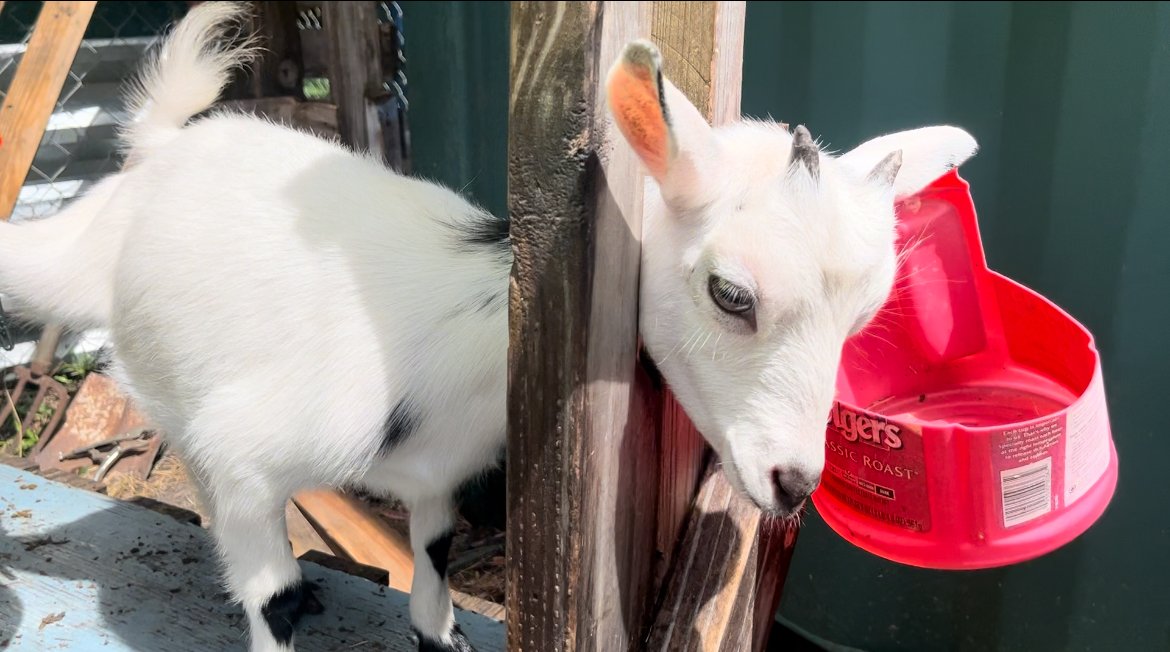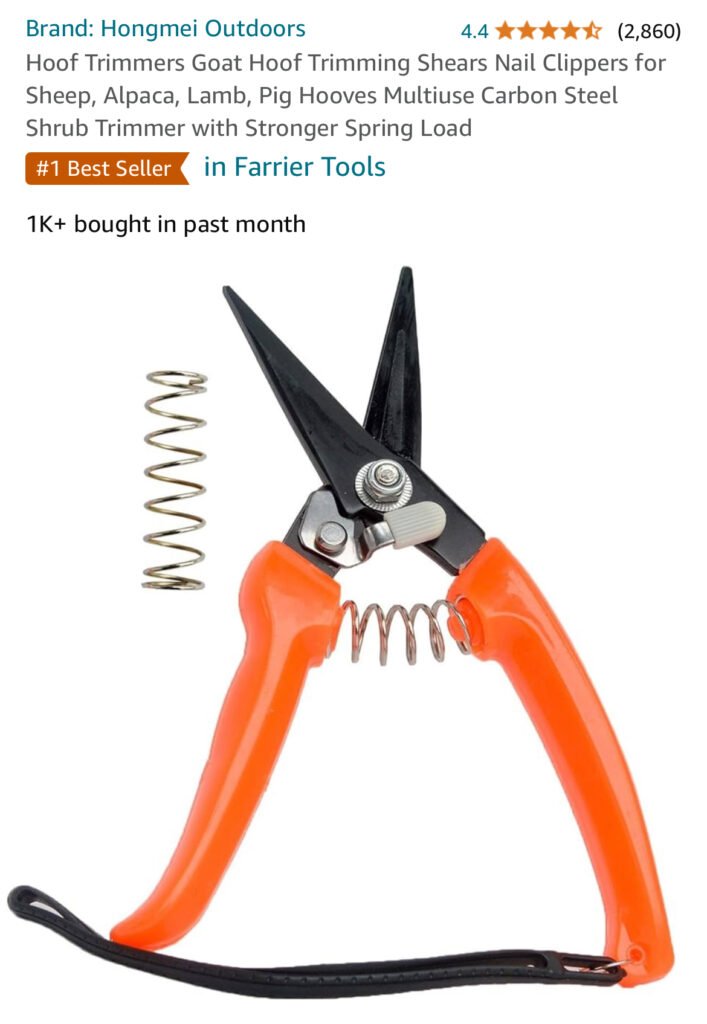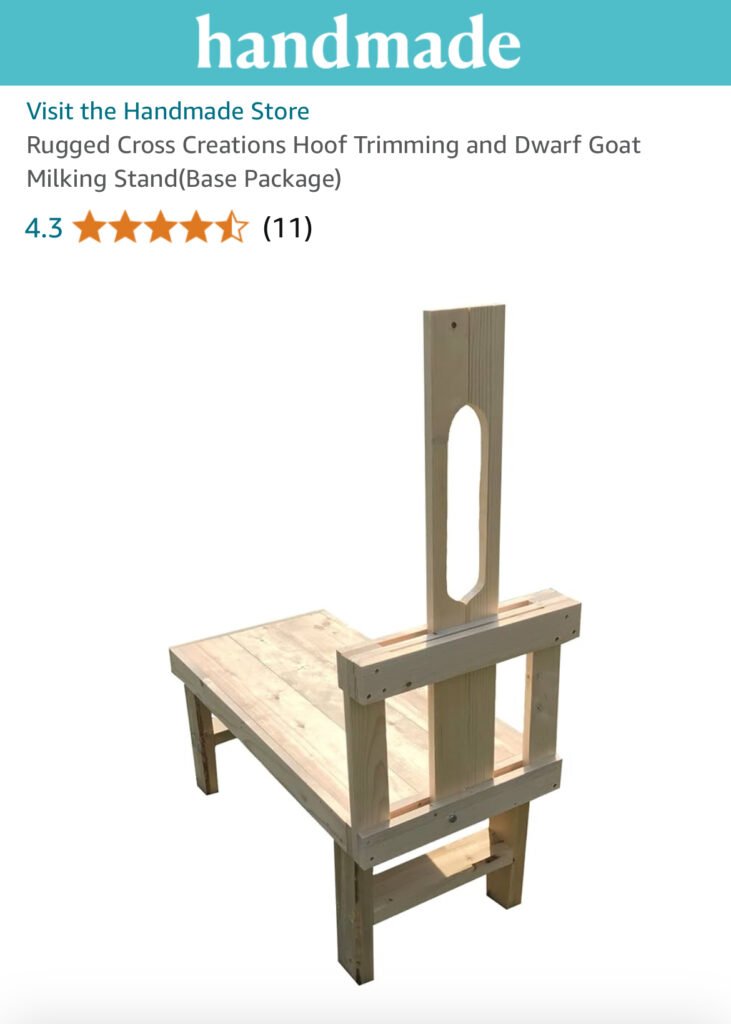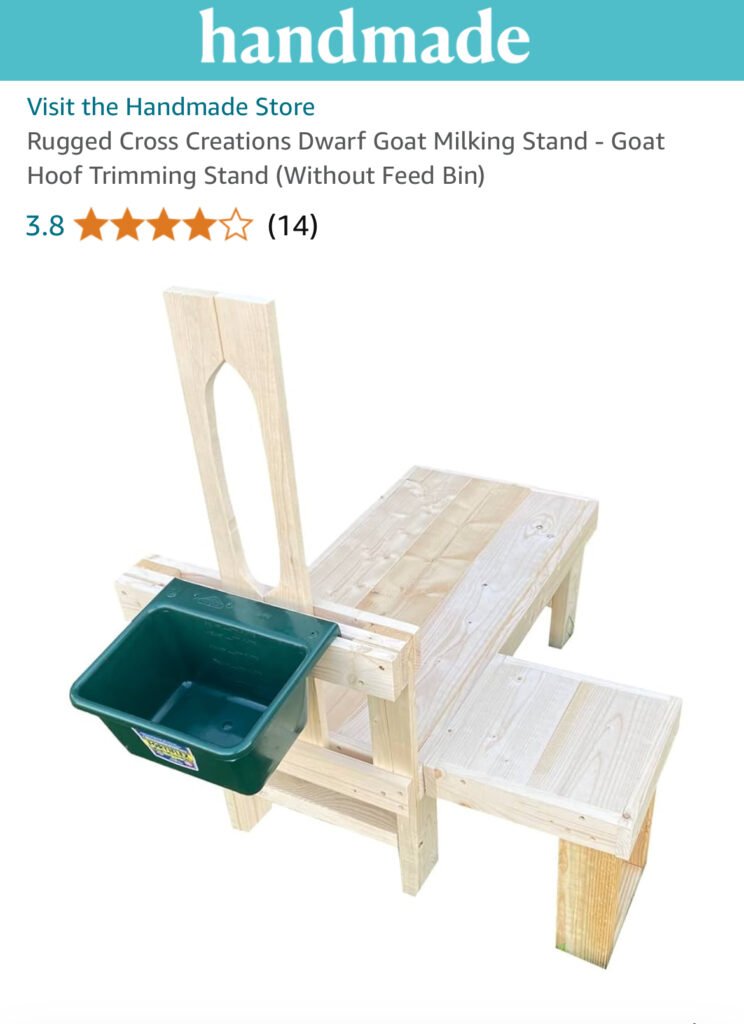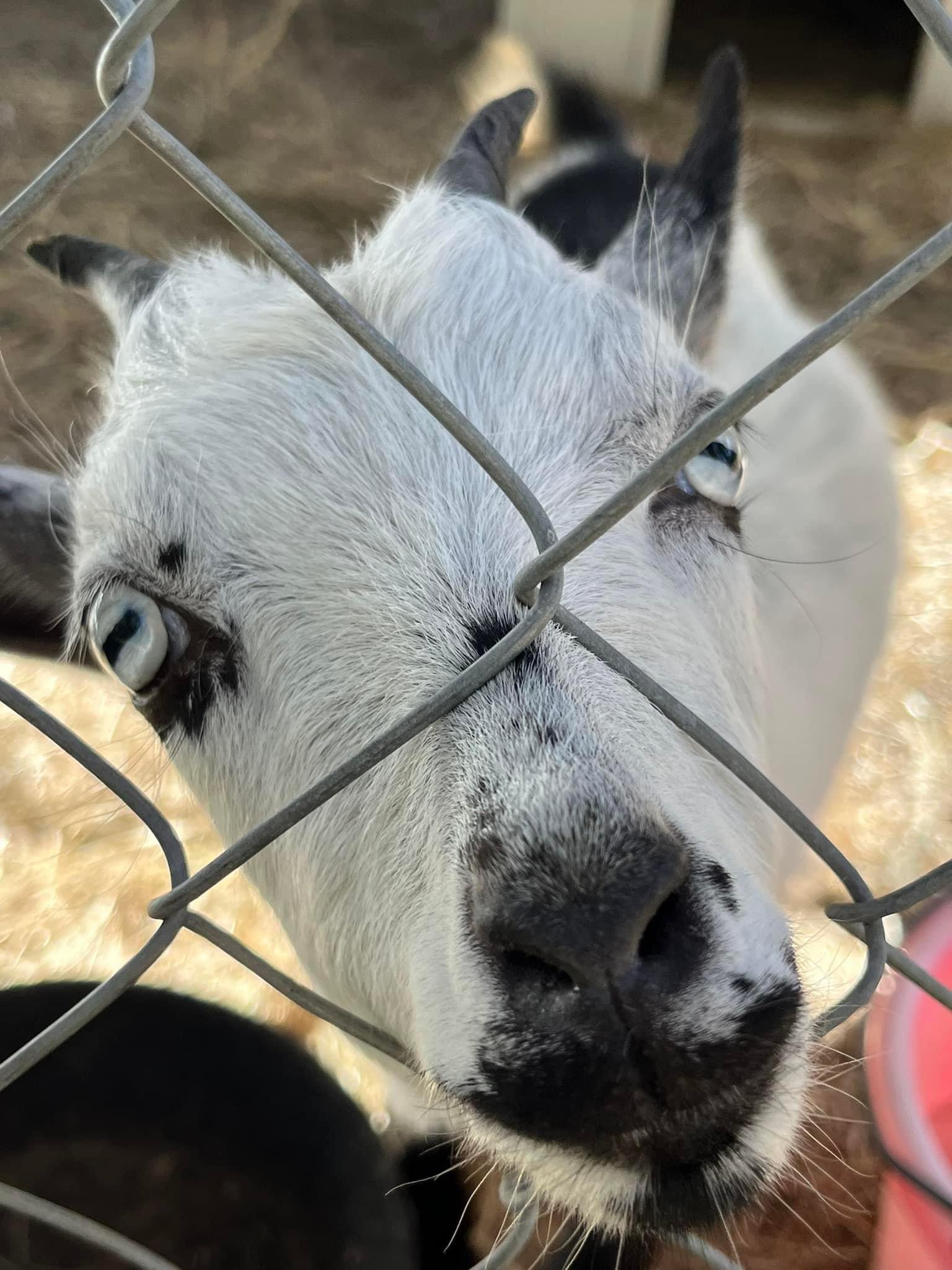Nigerian Dwarf Hoof Trimming
Monday on the farm is one of my favorite days. My barbershop in Brooksville, The Hometown Barber, is open Tuesday-Saturday, So unlike many of you, I look forward to this day! I can get some of my more time-consuming chores accomplished. This particular morning, I took the time to repair the gate to my twin 5 month old Nigerian Dwarf bucklings’ pen. My big boy buck, Joker, had knocked it clean off of its hinges, in a “grass is always greener” mentality attempt to get access to the other side of the hay manger.
While I was struggling with bending the chain link gate back into functional shape, I decided to reinforce the door frame, as well as the doorframe to our two 6 month old doelings’ pen. I was sweating up a storm getting this accomplished, so you can imagine how pleased I was to find that my youngest had taken the opportunity to begin the process of trimming the hooves for our sweet little herd. She accomplished this big task, on seven of our eight Nigerian Dwarfs.
Of course, that rascal Joker had no plans to be up on that hoof trimming stand! He can be pretty intimidating about what he does and doesn’t want to do, so I can’t say that I blame my daughter for leaving him to be tended to by me at a later date!
When To Trim Goat Hooves
It’s good practice to inspect each goat’s hooves regularly, and keep an eye out for limping, or an abnormal gait. Ideally they should be trimmed at a minimum of 6-8 weeks of growth. Failure to trim will quickly lead to problems. The hoof is a keratin sheath similar to your fingernails. It surrounds the toe pad which should have good, level and unobstructed contact with the ground. Overgrowth of the hoof sheath can cause pinching of the toe pad, or even lack of traction as the goat may actually be walking on the smooth hoof overgrowth. This is also an important time to check between the cloven hoof for build up of manure, dirt or other problematic substance. Failure to keep this area clean can lead to bacterial infection of the hoof and pad, called hoof-rot. It’s exactly what it sounds like. Bad news!
How to Trim My Goat’s Hooves
Trimming hooves is best if you have a way to restrain the goat. They usually dont understand very well that you are actually helping them. We use our milking stand for this purpose. They can still bounce around a lot, but at least with their head in the stanchion, they cannot run away! Funnily enough, though it does take a bit of effort to convince our buck Joker to get up on the stand, once he does, he does great! He always seems to understand that having his hooves neatly trimmed, feels good. The does and young goats though, generally complain and kick and attempt to escape the entire time. So be prepared to not give up!
When it comes down to actually trimming the goat hooves, it’s a fairly straightforward process. Like any animal or human, of course you want to avoid cutting back too far. After all, cutting into the toe pad could lead to even more trouble than you started with. First, we trim the obvious overgrowth of the hard keratin. Now looking at the center of the toe pad, scour out any build up of dirt, hay, manure, etc.. We usually can get it fairly clean just by using the point of the shears. Now, look at the toe pad. You can usually see that it isn’t flat. Carefully trim off raised areas until the whole pad looks nice and flat. The more regularly this process is done, the less likely to accidently cut too deeply. If you do see a little blood, a bit of cornstarch can help stop the bleeding. Once the toe pad looks nice and flat,without any tapering from front to back, or vice versa, proceed to finalizing the leveling out of the keratin sheath to match. When you finish, it should look clean and evenly level in a flat plane that will be paralell to the stance of the goat on a level surface when standing.

